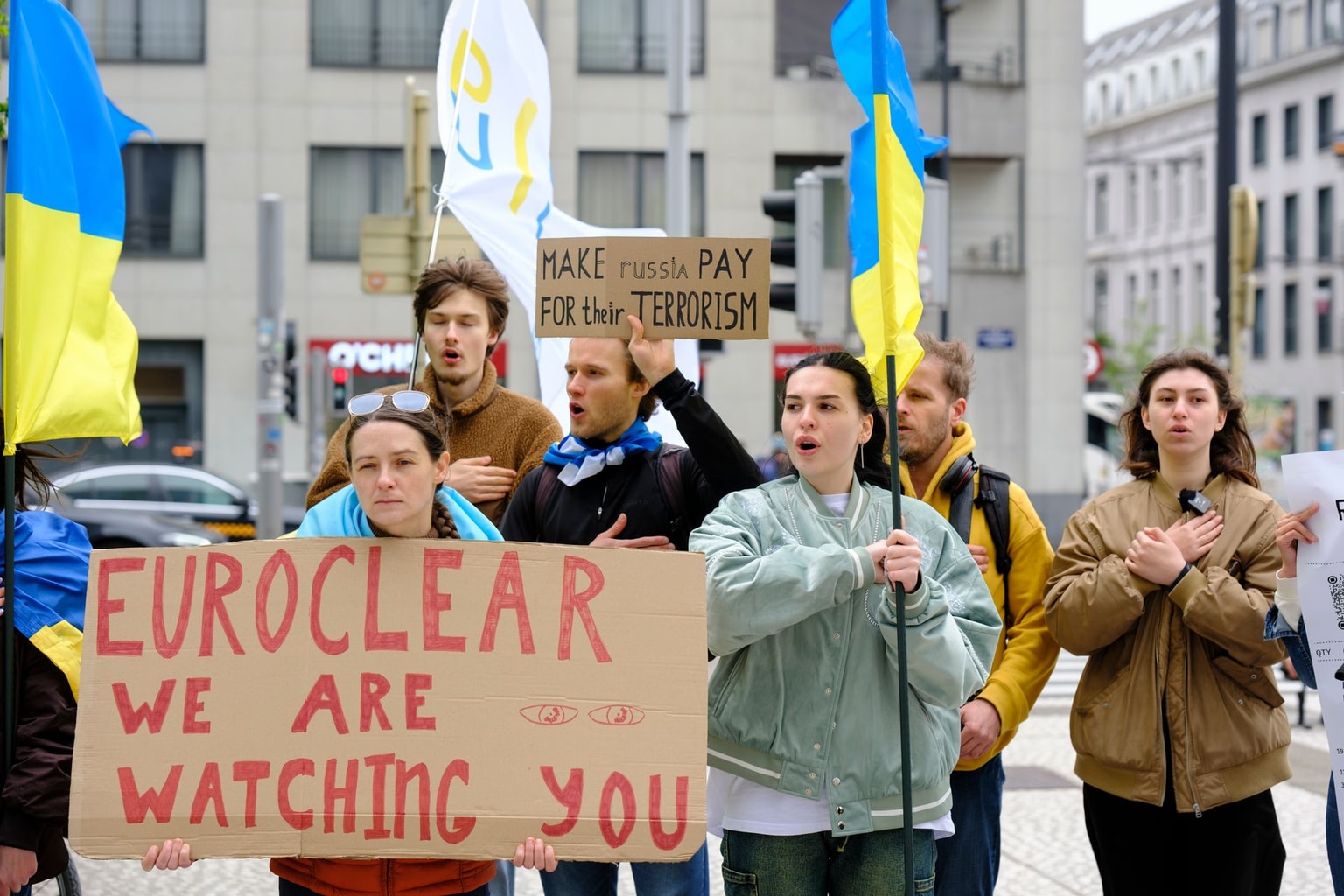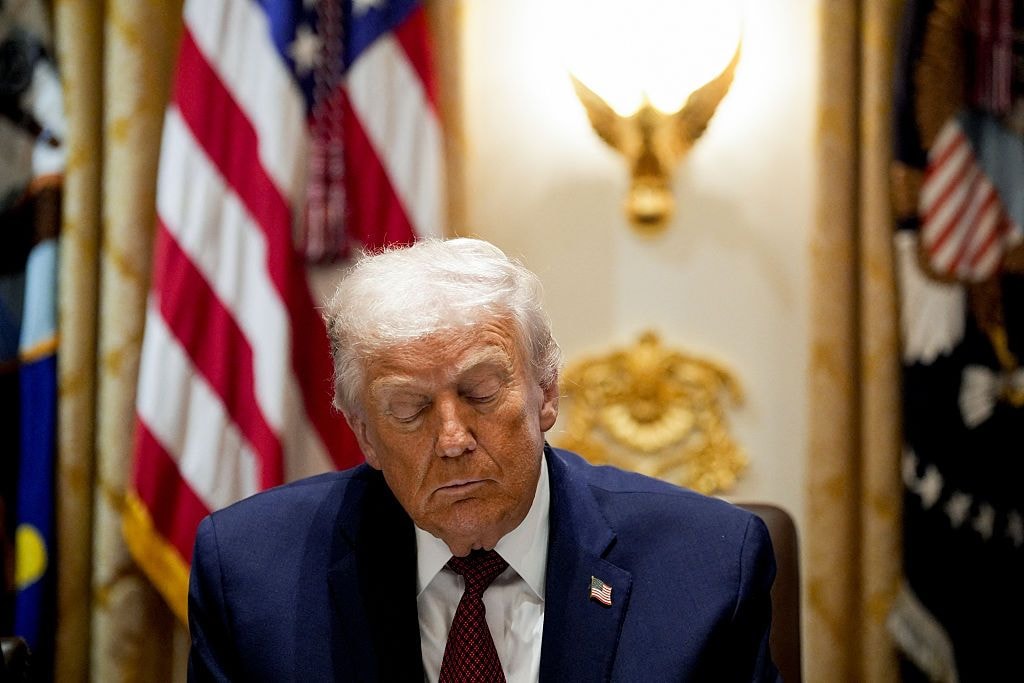
As Russian tank losses in Ukraine pass 9,000, here's what you need to know
A destroyed Russian tank sits in a snow-covered wheat field in the Kharkiv region on Feb. 22, 2023, amid Russia's military invasion of Ukraine. (Anantolii Stepanov / AFP via Getty Images)
Editor's note: This story was updated to reflect Russian tank losses reported by the General Staff of Ukraine's Armed Forces passing 9,000.
Russia's losses in Ukraine since the launch of the full-scale invasion recently passed another milestone, with the total number of "tanks" claimed destroyed by Kyiv passing the 9,000 mark.
As of Oct. 17, the figure stands at 9,014, according to the General Staff of Ukraine's Armed Forces.
At the start of the full-scale invasion, Russia was estimated to have around 3,300 operational tanks, suggesting that all those that initially drove into Ukraine and then some, have been taken out over the course of two-and-a-half years.
It's impossible to know for certain exactly how many tanks Russia has lost during the full-scale invasion of Ukraine, so any figures need to be treated as estimates.
Further complicating matters is what exactly Ukraine's General Staff counts as a "tank," with Ukraine's official count being plausible, yet most likely misleading.
"The daily figures from Kyiv just say tanks, but because it has a separate section for armored personnel vehicles, so it's my interpretation that they group main battle tanks and infantry fighting vehicles," Sascha Bruchmann, visiting research fellow for defense and military analysis at the International Institute for Strategic Studies (IISS), told the Kyiv Independent.
How accurate are the Ukrainian figures?
According to Bruchmann, the Ukrainian figures likely combine both main battle tanks (MBTs) and infantry fighting vehicles (IFVs).
Broadly speaking, the main battle tank is the classic tracked vehicle with a large, turret-mounted cannon. Modern Russian examples include the T-90 and its much-vaunted but yet-to-be-tested T-14 Armata.

An IFV is used to carry infantry into battle and provide direct-fire support and can resemble a tank, but usually with a smaller cannon. Modern Russian examples include the BMP-3.
While the Ukrainian figures do not appear to distinguish between the two, other sources do.
An assessment for British Defense Intelligence earlier this year said Russia had likely lost 2,600 tanks since the start of the full-scale invasion, and 4,900 IFVs, a total of 7,500.
Figures from the open-source investigative project Oryx put the number of tanks damaged or destroyed at 3,446.
As Oryx only publishes visually confirmed data taken from open sources, the real numbers of Russian losses are likely significantly higher.
"If you look at the British figures, they're getting close to what Ukraine is saying, and then with the visual confirmations from OSINT trackers like Oryx, I think the 9,000 figure is realistic," Bruchmann says.
Even Russia's most advanced and capable tanks have taken a hammering on the battlefield.
In January, a T-90M – which Russian President Vladimir Putin once described as "the best tank in the world" – was destroyed by two U.S.-supplied Bradley infantry fighting vehicles, in service since the early 1980s.
How many tanks does Russia have left?
At the beginning of its full-scale invasion, Russia had around 3,330 operational tanks, according to the Military Balance 2021 database.
The database included all tank types then employed by Russia’s military, notably T-72s, T-80s, and T-90s, and their modifications.
Clearly, the most recent figures of Russian tanks destroyed would mean almost the entire tank fleet employed by the Kremlin at the start of the full-scale invasion had been destroyed.
But Russia had thousands of tanks in storage which it has been forced to use as the war dragged on far beyond what the Kremlin initially envisaged.
A September 2023 report by the Institut Action Résilience using OSINT data calculated Russia has an estimated maximum of 7,000 tanks in storage.

Can Russia replace lost tanks?
Russia does have the capacity to replace the tanks it had lost since February 2022, though there's a massive caveat.
While Russia can maintain the quantity of tanks at the front, the quality is diminishing all the time, experts say.
Retired military officer and defense expert Viktor Kevliuk told the Kyiv Independent, the "figure (of destroyed tanks) means that the enemy has lost almost all of the modern tanks that it had at the beginning of the invasion."
"The capabilities of Russian industry to produce modern tanks are extremely limited, with 100-200 tanks per year," he adds.
"The bulk of the tanks supplied to the front are restored machines from the 1960s, 1970s and 1980s."
"The number (of lost tanks) is significant," Bruchmann told the Kyiv Independent.
"Your tanks are still the spearhead of your armored forces and if you run out of tanks, you lose a lot of combat power and mobility."
"If you run out of tanks, someone else has to bring that firepower onto the battlefield; someone has to pick up that slack," Bruchmann adds.
Bruchmann points to Ukraine's Kharkiv counteroffensive in 2022 as an example of what tanks can achieve.
Kyiv's forces swept through Russian defenses, liberating 12,000 square kilometers of territory in under a month.

"That was a fist-full of tanks that caused that entire unraveling," Bruchmann says. "Without tanks, you don't have this same offensive capability and you need to adapt for that."
Royal United Services Institute (RUSI) writes that Russia is "delivering approximately 1,500 tanks to its forces per year" but adds that "approximately 80% are not new production but are instead refurbished and modernized from Russian war stocks."
"A T-64, even if it's modernized, does not do the same thing as a T-90," Bruchmann says, adding that the "trajectory" of Russian losses means the situation for the Kremlin will only get worse as Ukraine destroys more and more newer tanks.

What does it mean for the war in Ukraine?
There is much debate over whether or not Russia is running out of tanks and what this means for the war in Ukraine, with some estimates suggesting that by 2026, the Kremlin won't have the means to replenish front-line positions.
But Bruchmann warns against thinking simply in terms of a trajectory of every decreasing numbers.
"War is dynamic, so just putting a current number in a trajectory won't give us the right story," he says.
"It's tough to then write 'yeah, in two years Russia will lose the war because they ran out of tanks,' because that's not how it's going to happen."
Tanks are at their most useful in an offensive capacity, and as Ukraine demonstrated last year, its Western allies have yet to give Kyiv enough to launch a successful counteroffensive against entrenched Russian forces.
Although Russia is currently on the offensive, its advances are grindingly slow and will only get slower as the number of tanks it has available decreases.
All of this plays into an increasingly attritional war, which, unable to liberate more land, does not bode well for Ukraine.
"It will inhibit Russia's ability to take more territory or make it more costly," Bruchmann says.
"But if the Russians have proved anything, it's that they're willing to take losses."










